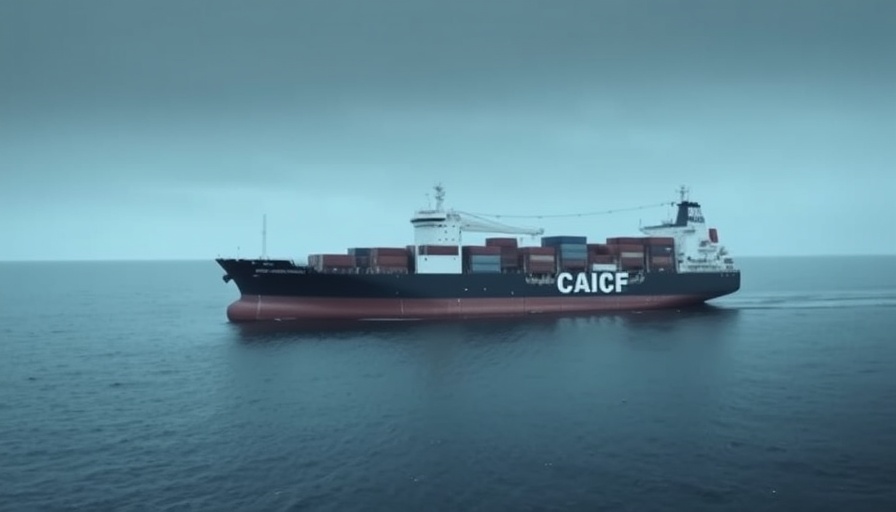
Adrift and Ablaze: The Minervagracht Incident in the Gulf of Aden
The Dutch-flagged cargo ship Minervagracht has become a focal point of maritime safety concerns after being engulfed in flames and left adrift in the Gulf of Aden. This alarming event unfolded following an explosion, which injured two crew members and necessitated their evacuation — a reminder of the ongoing volatility in these critical shipping lanes.
Understanding the Context: Houthi Threats and Maritime Security
The Houthi rebels of Yemen have increasingly targeted international shipping routes as part of their broader campaign linked to political tensions in the region. This specific strike appears to be tied to the rebels' consistent threats against vessels they perceive as linked to their adversaries, particularly in response to the ongoing Israel-Hamas conflict. The United Kingdom Maritime Trade Operations (UKMTO) confirmed that this attack left the Minervagracht ablaze but initially did not establish a direct claim from the Houthis. Similar incidents have occurred, such as the assault on two other vessels in the Red Sea earlier this year, raising serious questions about maritime safety in one of the world's busiest shipping corridors.
The Incident’s Immediate Impact
Following the explosion on Monday, the Minervagracht was reported to have sustained “substantial damage,” according to its operator, the Amsterdam-based company Spliethoff. Fortunately, all 19 crew members were safely evacuated, though reports indicate that two individuals sustained varying degrees of injuries. A Greek and a French naval frigate responded promptly to assist, underscoring the cooperative maritime vigilance maintained by international forces in the region.
Global Repercussions of Local Conflicts
This incident is not just a localized event; it highlights the intricate interplay between maritime security and geopolitical tensions in the Middle East. Houthi attacks have disrupted shipping along this vital route where over $1 trillion in goods pass annually. The broader implications are painfully clear: increased risks may lead to higher insurance premiums for shipping companies, rerouting of maritime traffic, and elevation in global shipping costs, which can ultimately affect consumers worldwide.
Long-term Maritime Security Considerations
As incidents like these continue to emerge, the naval communities and their respective governments must reevaluate their strategies concerning maritime security in conflict-prone regions. International naval force operations, such as Operation Aspides, will likely play an increasingly vital role in safeguarding commerce against such attacks. This particular incident has prompted discussions on enhancing protective measures for commercial shipping operations, potentially leading to larger global discussions about naval defense policies.
Future Insights and Predictions for Maritime Operations
As the conflict in Yemen persists, analysts predict that maritime risks will only exacerbate, leading to heightened military presence and protective initiatives in affected areas. Companies; therefore, must anticipate disruptions and adapt to ever-changing maritime security landscapes. The international community's commitment to maintaining open shipping routes will be critical, particularly as the Houthis adjust their tactics and target selections based on current geopolitical strategies.
Conclusion: The Importance of Vigilance
For the shipping industry and global commerce, understanding and adapting to these threats is essential. The Minervagracht incident serves as a potent reminder of the delicate balance between maritime freedom and security. As tensions flare in the region, stakeholders must collaborate more effectively to ensure the safety of seafarers and the uninterrupted flow of goods across vital trade routes. Vigilance, preparedness, and international cooperation will be paramount in navigating these turbulent waters.
 Add Row
Add Row  Add
Add 




Write A Comment